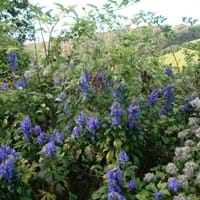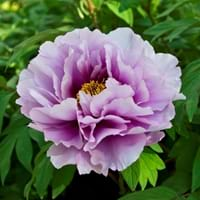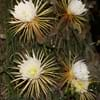Life Span
Perennial
Perennial
Type
Flowering Plants
Flowering Plants, Shrubs
Origin
Not Available
Asia, North America, Southern Europe
Types
Aconitum napellus
Aristocrat, Buckeye Belle, Henry Bockstoce , Abalone Pearl, Coral Supreme, Cytherea, Charlie's White
Habitat
Damp shady woods, meadows
Hillside, Woods
USDA Hardiness Zone
12-15
3-9
Sunset Zone
21, 22, 23, 24
A3, 1a, 1b, 2a, 2b, 3a, 3b, 4, 5, 6, 7, 8, 9, 10, 11, 12, 13, 14, 15, 16, 17, 18, 19, 20, 22
Habit
Oval or Rounded
Clump-Forming
Minimum Height
Not Available
Minimum Width
Not Available
Flower Color
Yellow
Pink, Red, White
Flower Color Modifier
Not Available
Not Available
Fruit Color
Green
Not Available
Leaf Color in Spring
Not Available
Dark Green
Leaf Color in Summer
Not Available
Dark Green, Green
Leaf Color in Fall
Not Available
Bronze, Dark Green, Green
Leaf Color in Winter
Not Available
Not Available
Leaf Shape
Compound
Compound
Plant Season
Not Available
Spring
Sunlight
Not Available
Full Sun, Part sun
Growth Rate
Very Slow
Slow
Type of Soil
Not Available
Loamy
The pH of Soil
Not Available
Neutral
Soil Drainage
Not Available
Well drained
Bloom Time
Spring
Spring, Summer
Repeat Bloomer
Not Available
No
Tolerances
Not Available
Not Available
Where to Plant?
Ground
Ground, Pot
How to Plant?
reseeds
Grafting, Seedlings, Stem Planting, Transplanting
Plant Maintenance
Medium
Medium
Watering Requirements
Do not let dry out between waterings
Does not require lot of watering, It cannot sustain wet-feet, Keep the ground moist but not water-logged, Needs watering once a week, Prefer drip-irrigation instead of Over-head watering, Water occasionally
In Summer
Lots of watering
Lots of watering
In Spring
Moderate
Moderate
In Winter
Average Water
Average Water
Soil pH
Not Available
Neutral
Soil Type
Not Available
Loamy
Soil Drainage Capacity
Not Available
Well drained
Sun Exposure
Not Available
Full Sun, Part sun
Pruning
Remove damaged leaves, Remove dead branches, Remove dead leaves
Do not prune during shooting season, Prune to control growth, Remove dead or diseased plant parts, Remove deadheads
Fertilizers
All-Purpose Liquid Fertilizer
All-Purpose Liquid Fertilizer
Pests and Diseases
Red blotch
Botrytis Blight, Leaf spot, Stem spot, Viruses
Plant Tolerance
Drought
Not Available
Flowers
Not Available
Yes
Flower Petal Number
Single
Semi-Double
Fragrant Flower
Not Available
Yes
Fragrant Fruit
Not Available
No
Fragrant Leaf
Not Available
No
Fragrant Bark/Stem
Not Available
No
Showy Foliage
Not Available
No
Showy Bark
Not Available
No
Foliage Texture
Bold
Coarse
Foliage Sheen
Not Available
Glossy
Invasive
Not Available
No
Self-Sowing
Not Available
No
Attracts
Hummingbirds
Ants
Allergy
poisonous if ingested, Toxic
Not Available
Aesthetic Uses
Not Used For Aesthetic Purpose
Beautification, Bouquets, Showy Purposes, Used for decorating walls, fences, gates, hedges, etc.
Beauty Benefits
Not Available
Not Available
Environmental Uses
Air purification
Air purification
Medicinal Uses
Analgesic, Anodyne, Diaphoretic, Homeopathy, Used as a sedative
Cough, Gout, Headache, Heartburn, Kidney problems, Upset stomach, Urinary tract problems
Part of Plant Used
Root
Flowers, Root, Seeds
Other Uses
Not Available
Showy Purposes, Used as Ornamental plant, Used for fragrance
Used As Indoor Plant
No
No
Used As Outdoor Plant
Yes
Yes
Garden Design
Not Available
Feature Plant, Foundation, Mixed Border
Botanical Name
Aconitum
Paeonia suffruticosa
Common Name
aconite, monkshood, wolf's bane, leopard's bane, mousebane, women's bane, devil's helmet, Queen of all Poisons, blue rocket
Peony
In German
Eisenhut
Pfingstrose
In French
Queen of all Poisons
Pivoine
In Spanish
Queen of all Poisons
Peonía
In Greek
Queen of all Poisons
παιωνία
In Portuguese
Queen of all Poisons
Peônia
In Latin
Queen of all Poisons
AGLAOPHOTIS
Phylum
Tracheobionta
Magnoliophyta
Class
Magnoliopsida
Magnoliopsida
Order
Ranunculales
Not Available
Family
Cactaceae
Paeoniaceae
Clade
Angiosperms, Eudicots
Angiosperms, Core eudicots, Eudicots
Tribe
Delphinieae
Not Available
Subfamily
Not Available
Not Available
Season and Care of Queen of all Poisons and Peony
Season and care of Queen of all Poisons and Peony is important to know. While considering everything about Queen of all Poisons and Peony Care, growing season is an essential factor. Queen of all Poisons season is Not Available and Peony season is Not Available. The type of soil for Queen of all Poisons is Not Available and for Peony is Loamy while the PH of soil for Queen of all Poisons is Not Available and for Peony is Neutral.
Queen of all Poisons and Peony Physical Information
Queen of all Poisons and Peony physical information is very important for comparison. Queen of all Poisons height is Not Available and width Not Available whereas Peony height is 76.20 cm and width 61.00 cm. The color specification of Queen of all Poisons and Peony are as follows:
Queen of all Poisons flower color: Yellow
Queen of all Poisons leaf color: Not Available
Peony flower color: Pink, Red and White
- Peony leaf color: Dark Green
Care of Queen of all Poisons and Peony
Care of Queen of all Poisons and Peony include pruning, fertilizers, watering etc. Queen of all Poisons pruning is done Remove damaged leaves, Remove dead branches and Remove dead leaves and Peony pruning is done Do not prune during shooting season, Prune to control growth, Remove dead or diseased plant parts and Remove deadheads. In summer Queen of all Poisons needs Lots of watering and in winter, it needs Average Water. Whereas, in summer Peony needs Lots of watering and in winter, it needs Average Water.





